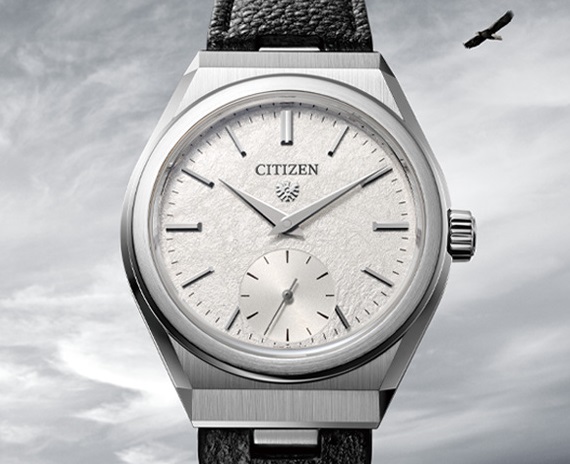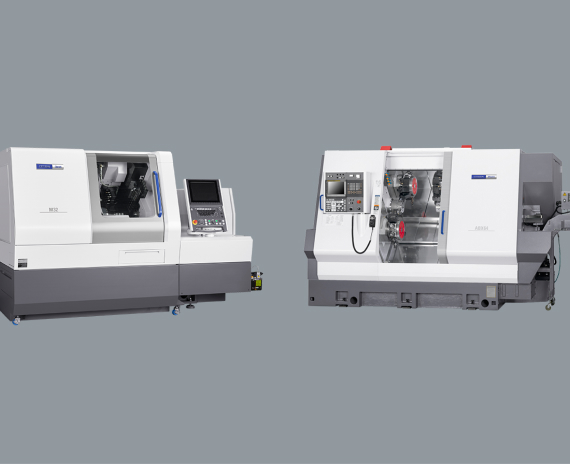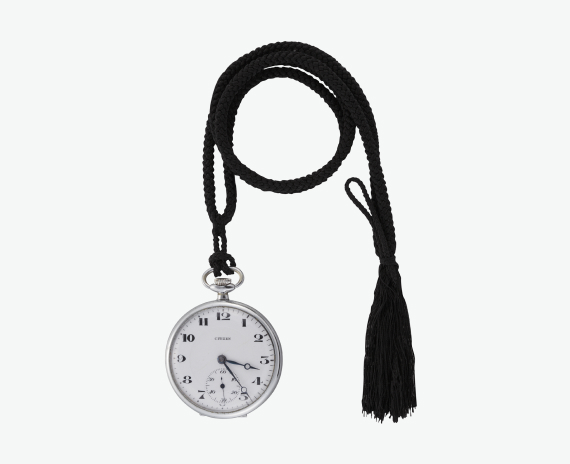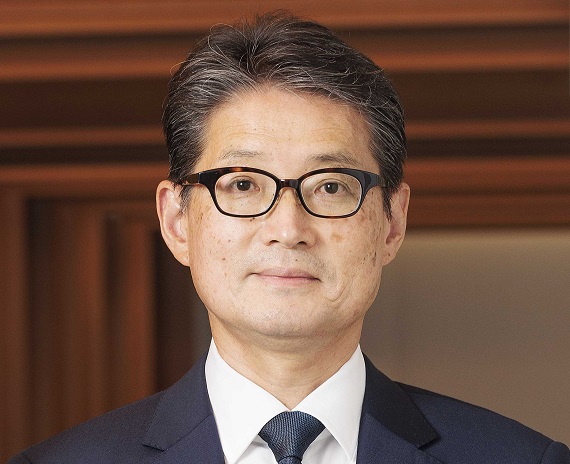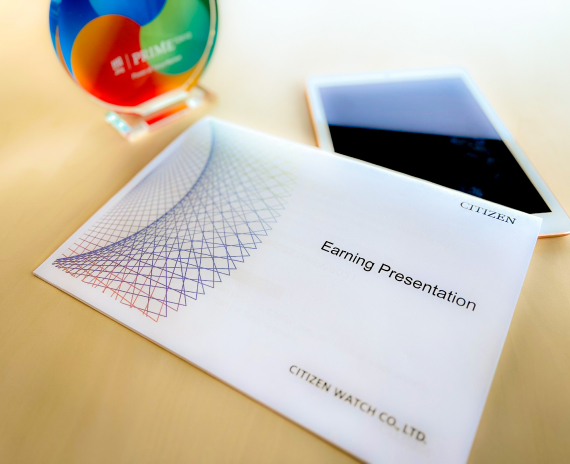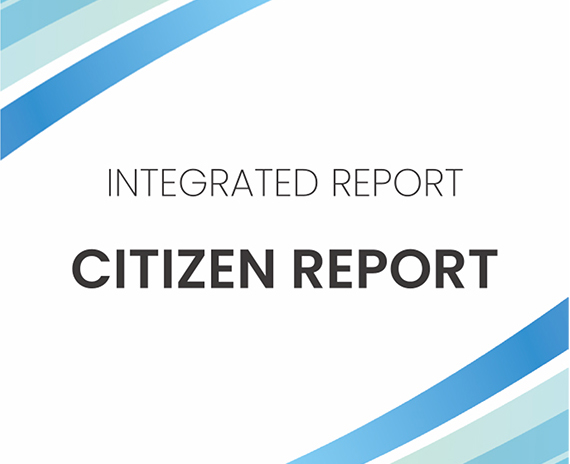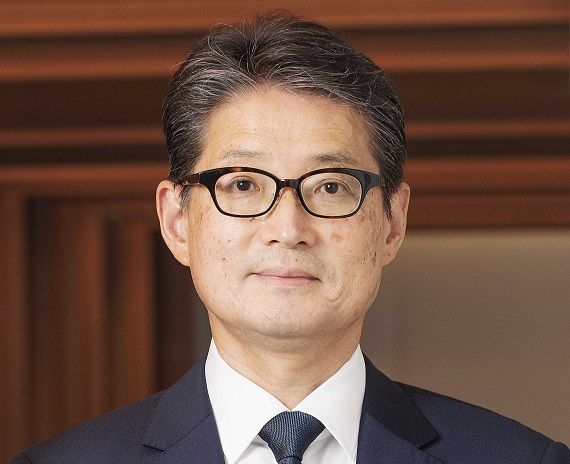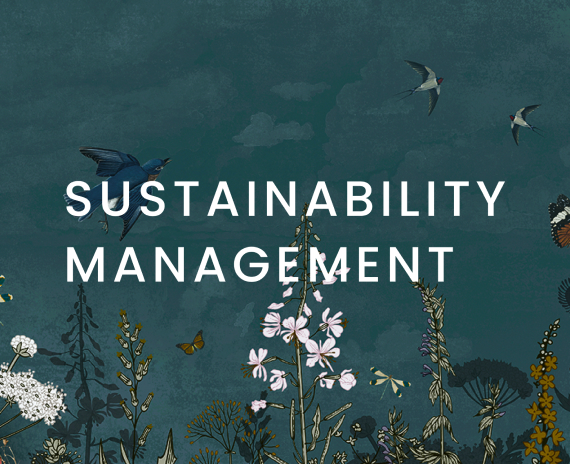- TOP
- Sustainability
- Environment: Responding to Water Risks and Opportunities
Responding to Water Risks and Opportunities
The CITIZEN Group promotes the sustainable use of water resources at its production sites in Japan and overseas by reducing water withdrawal through the introduction of high-efficiency equipment and the promotion of water recycling, as well as by making factory wastewater cleaner through strict wastewater management. We are also working to reduce water risks by setting detailed goals for each site.
Water-Related Risks and Opportunities
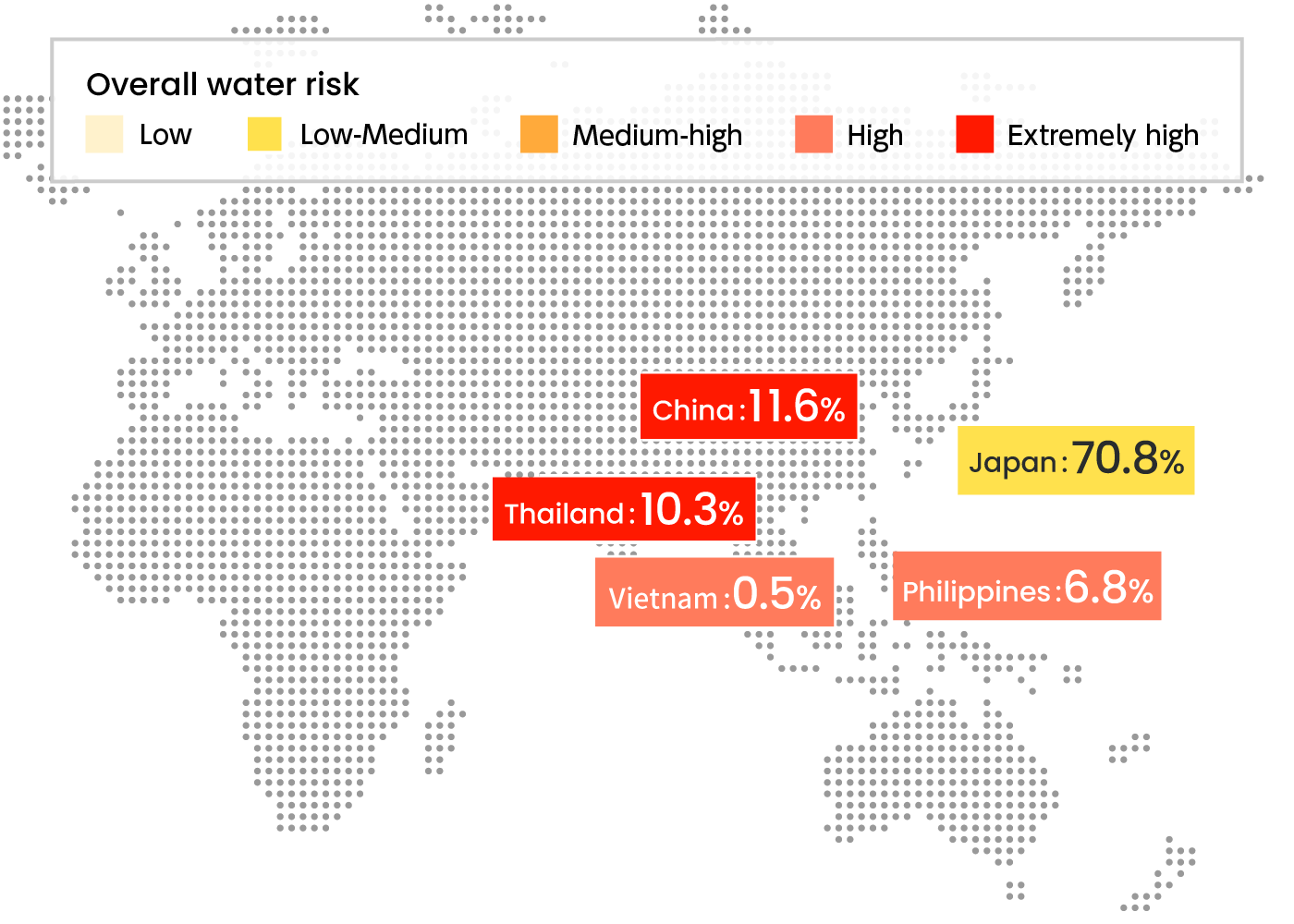
- * Based on April 2025 data on World Resource Institute (WRI) Aqueduct 4.0
- * Country data (%): Percentage of water withdrawn in each country against The CITIZEN Group’s total water withdrawal
- * On the map, the level of each country’s overall water risk is indicated in the color that shows the risk level of the business site area(s) with the highest risk in that country.
Please scroll down to see→
| Overall water risk | Water stress | Riverine flood risk | Coastal flood risk | Untreated connected wastewater | Coastal eutrophication potential | |
|---|---|---|---|---|---|---|
| Extremely high | 2 sites in Thailand and 1 site in China | 4 sites in Thailand and1 site in China | None | 4 sites in China and1 site in Vietnam | 2 sites in the Philippines and1 site in Vietnam | 23 sites in Japan |
| High | 2 sites in Thailand and2 sites in the Philippines and1 site in Vietnam | None | 4 sites in Thailand and1 site in Vietnam | None | 4 sites in Thailand and6 sites in China | 5 sites in China |
Please scroll down to see→
| Water withdrawal | 312,000 m3 (18%) |
|---|---|
| Water consumption | 78,000 m3 (15%) |
- * The percentage figure in the parentheses shows the ratio against the water withdrawal and consumption of the entire Citizen Group.
- * The term "water-stressed areas" here denotes areas at a high or extremely high risk of water stress.
- * This is an assessment of the basin in which each site is located and does not take into account the specific location or countermeasures taken there.
Operating in Areas of High Water Risk
Alongside climate change-related risks and opportunities, we have identified water-related risks and opportunities and are managing them in an integrated manner under the Company-wide risk management system. Risks of this kind are also included in the Sustainability Committee’s agenda, where risk identification is conducted within the framework of ISO 14001. Water-related risks and opportunities for the next 3 to 5 years are reviewed annually using the WRI Aqueduct. An examination of the WRI Aqueduct assessments combined with local site information has revealed that among production sites of The CITIZEN Group, two factories in Thailand and one in China are in areas at an "extremely-high" water risk. We have focused not only on water stress, an indicator of the risk of freshwater shortage in a basin but also on indicators related to wastewater quality, which can affect local ecosystems, and introduced a wastewater quality improvement target into our Environmental Target 2030. Efforts to improve water quality at each Group company, such as the renewal of wastewater treatment facilities, have also been initiated. Going forward, we will enhance our assessment of water-related risks at production sites and consider setting targets tailored to the risks identified at each site. Water-related risks, such as those of flooding and water shortages caused by extreme weather, can significantly and directly affect our value chain, including operations and parts procurement, thereby reducing our profitability. The CITIZEN Group has specified the following as water-related risk factors: suspension of factory operations, procurement, and logistics due to flooding or the like; suspension of factory operations due to water shortage and/or water supply restrictions caused by drought or the like; and incurrence of countermeasure costs due to contamination of factory groundwater. Although the likelihood of these events is not high, we will promote activities to minimize the impact of these risks and conduct detailed surveys in each region to identify potential risks and respond to them carefully. We also conduct supplier surveys, and going forward, we will ask our suppliers to carry out water-risk-reduction activities.
We engage in close communication with the local industrial park administrators and government agencies to keep our water-related risk information up to date. For the future, we are planning to strengthen the water-related risk assessments that we will conduct at the time of the launch of a new business or the construction of a new factory. FY2024 saw the construction of new buildings and the reconstruction of existing buildings on some of our factory sites, and these works were conducted appropriately in compliance with applicable laws and regulations.
Efforts to Respond to Water Risks
To promote sustainable use of water resources in response to water supply risks, The CITIZEN Group is engaged in improvement of water use by setting a water withdrawal reduction target. In addition, to respond to regulatory risks, such as risks entailed by water-related laws and regulations, and to achieve cleaner factory wastewater, we monitor the quality of wastewater discharged from wastewater treatment facilities and manage it by independently setting standards that are stricter than the legal limits. Some factories have also independently set standards that are stricter than the legal limits in consultation with the industrial park administrator.
In FY2024, there were no serious violations of with water-related laws and regulations or cases of regulatory incompliance, with no penalties or fines imposed on us. Also, our activities had no water-related adverse impacts.
The manufacture of semiconductors requires significant volumes of water during the dicing process (i.e. when chips are cut from silicon wafers). CITIZEN ELECTRONICS has adopted a system whereby wastewater is collected from the dicing equipment, filtered, and resupplied to support the dicing process. This system enables effective use of limited water resources by reducing water consumption by as much as 1,104,902 liters per unit annually.
Trends in The CITIZEN Group's Water Withdrawal
CITIZEN Group Environmental Goals 2030 include a goal of a significant reduction of 35% in water withdrawal compared to FY2018, and we are promoting activities to conserve water resources.
In FY2024, our domestic water withdrawal was 1,197,000 m3, and our overseas water withdrawal was 494,000 m3, totaling 1,692,000 m3. This means that we achieved the FY2024 target of a 17% reduction in water withdrawal compared to the FY2018 level. The water withdrawal was composed of 38% groundwater, 42% tap water, and 20% industrial water. To realize "sustainable factories," where water risks in all manufacturing processes are taken into account, we will further reduce water withdrawal and wastewater discharge in FY2025 and beyond by introducing water-saving and high-efficiency equipment and recycling water.
Please scroll down to see→
| FY2018 | FY2019 | FY2020 | FY2021 | FY2022 | FY2023 | FY2024 | ||
|---|---|---|---|---|---|---|---|---|
| Fresh surface water (rainwater) | Japan | 0 | 1 | 1 | 1 | 0 | 0 | 0 |
| Groundwater (recyclable) | Japan | 590 | 562 | 546 | 583 | 640 | 657 | 690 |
| Third-party source (tap water) | Japan | 473 | 443 | 399 | 410 | 381 | 347 | 331 |
| Third-party source (industrial water) | Japan | 240 | 231 | 158 | 216 | 199 | 188 | 176 |
| Total domestic water withdrawal | 1,303 | 1,237 | 1,104 | 1,209 | 1,220 | 1,193 | 1,197 | |
| Fresh surface water (rainwater) | Outside Japan | 0 | 0 | 0 | 0 | 0 | 0 | 0 |
| Groundwater (recyclable) | Outside Japan | 10 | 4 | 2 | 4 | 2 | 5 | 12 |
| Third-party source (tap water) | Outside Japan | 537 | 503 | 389 | 414 | 375 | 336 | 316 |
| Third-party source (industrial water) | Outside Japan | 375 | 210 | 256 | 233 | 185 | 140 | 167 |
| Total overseas water withdrawal | 922 | 717 | 648 | 651 | 563 | 482 | 494 | |
| Total water withdrawal | 2,225 | 1,954 | 1,751 | 1,860 | 1,783 | 1,674 | 1,692 | |
- * No water was withdrawn from rivers, lakes, ponds, seas, or quarries. No wastewater from outside was consumed.

